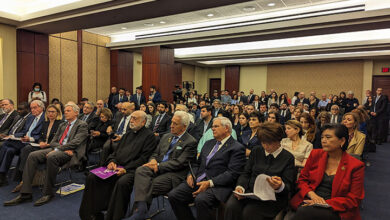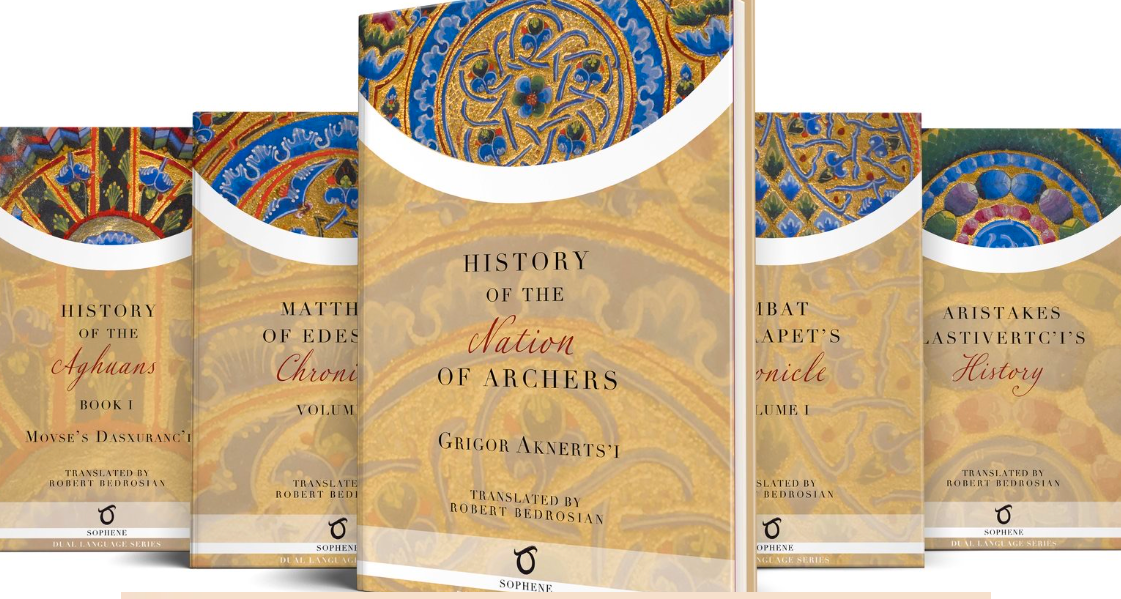
Sophene Armenian Library has announced the publication of five gems of medieval Armenian literature. The hardbacks are the first releases of the Library’s new Dual Language Series, which places the original Armenian text on the left-hand side and the corresponding English translation on the right-hand side available from December 1.
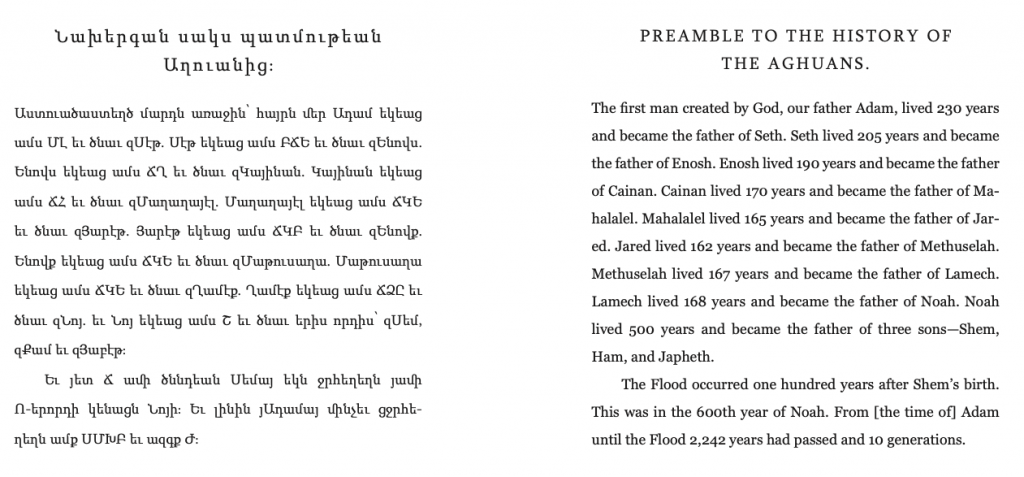
The five new publications include:
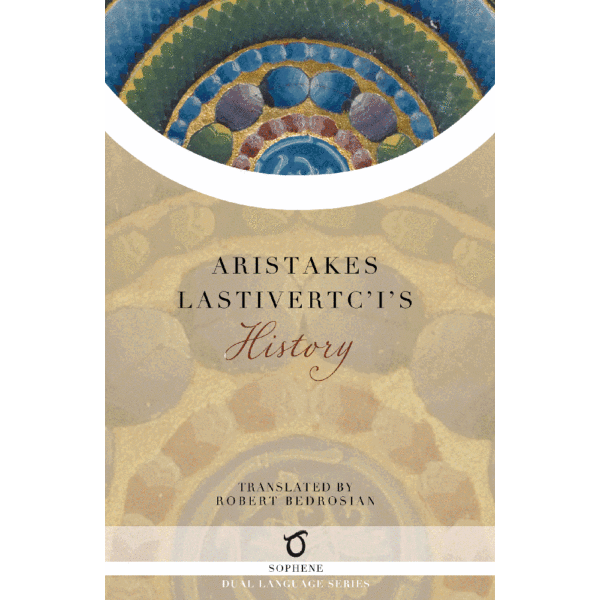
Aristakes Lastivertc’i’s History. Aristakes Lastiverts’i was an eleventh century Armenian cleric and historian. His History was written between 1072 and 1079, and describes the events of 1000-1071, including information about Byzantine-Armenian relations, the Seljuk invasions, and the Tondrakian movement in the Armenian Church. The work opens with a poetic summary of the disasters befalling the Armenian people in the eleventh century. Subsequent chapters describe Byzantine attempts to subjugate the Armeno-Georgian district of Tayk’ (1000 to 1022); conflicts and cooperation among Armenian and Georgian princes; and the Seljuk invasions from 1047 to the capture of the city of Ani (1064) and the Battle of Manzikert (1071).

History of the Aghuans, by Movse’s Dasxurants’i (Book 1). A major source for the history of the indigenous Aghuan people of Caucasia from the earliest times to about A.D. 988. Aghuania (also Arran, Aghbania, Caucasian Albania) comprised parts of modern Dagestan and Azerbaijan, Armenia’s eastern neighbor. Its ancient peoples and their numerous languages were noted occasionally by classical Greek and Latin authors. Like the neighboring Armenians, the Aghuans were part of the Iranian-Zoroastrian culture-world for at least a millennium. Their royalty and nobility had marriage ties with their counterparts in Iran and Armenia. Also, like Armenia, Aghuania was among the countries early visited by the Apostles; and the Aghuan and Armenian churches were frequently united. Book One, in 30 chapters, gives a brief summary of Armenian and Aghuanian history reaching to the end of the 5th century.
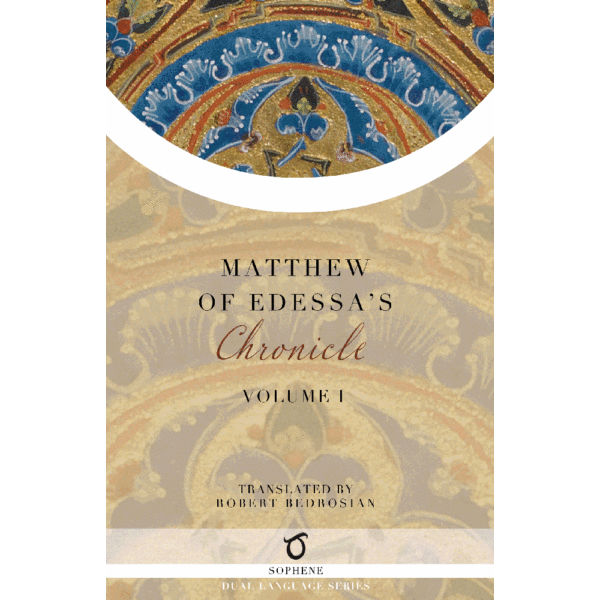
Matthew of Edessa’s Chronicle (Volume 1). A valuable source for this history of the Near East in the 10th – 12th centuries. Matthew’s work describes the period from 952 to 1129. Appended to it is a continuation by Gregory the Priest, which describes events from 1137 to 1162. Western scholars have used the Chronicle primarily for its unique information on the Crusades. It contains, additionally, invaluable information on Byzantium, the Arabs, Seljuks, Iranians, and especially the Armenians, both secular and clerical, both lords and louts. Along with this, Matthew describes such diverse phenomena as urban mobs, siege warfare, and confessional disputes, and he presents a welter of remarkable material of interest to many disciplines, including folklore and anthropology. Volume 1 was written over eight years (1102 to 1110), and covers the period from 952 to 1052. Nothing certain is known about Matthew’s life. The city of Edessa, whose medieval history is an important focus of Matthew’s Chronicle, played a major role in the development of Armenian literary culture. It was a cosmopolitan center of Syrian, Armenian, and Jewish culture from remote antiquity, and later was influenced to some extent by Greek Hellenism. At the time Matthew was writing—as well as before and after—Armenians of various faiths and speaking numerous languages, lived in a vast stretch of territory, from Georgia in the north, through eastern, central, and western Asia Minor, western Persia, northern Mesopotamia, the Levant, and Egypt.
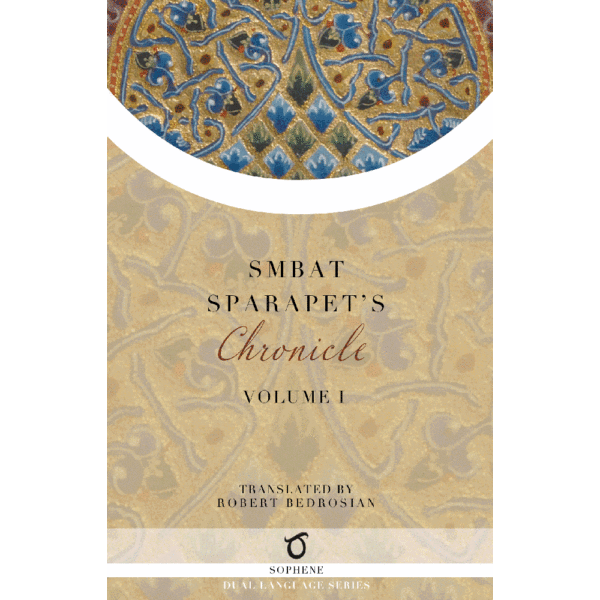
Smbat Sparapet’s Chronicle (Volume 1). Smbat Sparapet’s Chronicle is a major source for the history of the Armenian Kingdom of Cilicia. Roughly three-quarters of the work consists of a summary of Matthew of Edessa’s Chronicle which describes the period from 951 to 1136 and its continuation by Gregory the Priest, covering the period from 1136-1162. Given that Matthew’s work has survived, by far the most important part of Smbat Sparapet’s Chronicle is its original contribution, devoted to the period from 1163 to 1272. Volume I covers the period from 1136 to 1150. As a statesman and general, Smbat Sparapet (“the Constable”) was a major participant in Cilician civil, military, and diplomatic affairs of the second half of the 13th century. An educated and literate individual, Smbat translated the Assizes of Antioch from French into Armenian, and probably also had some familiarity with Greek, Arabic, Turkish and Persian. He visited the Mongol court in Karakorum in 1248 and recorded some of his observations in a short letter in French to his brother-in-law Henry I of Cyprus. Such an individual certainly was uniquely well-informed to write a chronicle of his times.
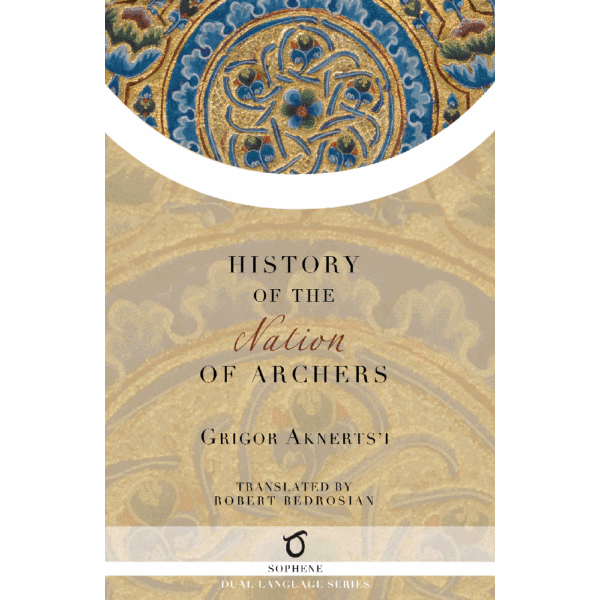
History of the Nation of Archers, by Grigor Aknerts’i. The History of the Nation of Archers is a brief history of the Mongols and their arrival and conquests in the Near East over a period of 44 years (1229 to 1273). Little is known about Gregory and his sources, but he is thought to have based his History on the reports of knowledgeable informants and manuscripts that are now lost. The History is a valuable source for thirteenth century Armenian and Mongol studies. Gregory of Akner (1250 to 1335 CE) was an Armenian historian and abbot of the monastery of Akner in Cilicia.
These gems of Armenian literature are translated by Robert Bedrosian, one of the world’s foremost Armenian scholars. Robert received his Ph.D. from Columbia University in 1979, specializing in ancient and medieval Armenian history, followed by a decades-long successful career in computer programming. Since 2009, he has uploaded over 2,000 documents online about ancient and medieval Armenian culture. A list of these documents can be found here, accompanied by 23 resource guides to help people navigate the materials.





